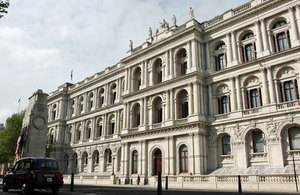Biometrics and Forensics Ethics Group announces new chair
Mark Watson-Gandy has been named as the new chair of the Biometrics and Forensics Ethics Group.
Professor Mark Watson-Gandy is a practising barrister, author and company chairman.
Mark is experienced in advising government having been a former junior counsel to the crown.
Mark has considerable experience of chairing committees. Since 2014 he has been chair of Mental Health First Aid England, a community interest company launched under the Department of Health: National Institute of Mental Health in England (NIMHE) as part of a national approach to improving public mental health. Mark also chairs the Disciplinary Appeals Committee of the Institute of Financial Accountants and is Head of Professional Standards for the Institute of Certified Bookkeepers, a statutory supervisory body.
The author of several legal text books Mark is also a special lecturer at Cass Business School, a visiting professor at the University of Westminster and a member of court at the University of Essex.
Mark takes over from Christopher Hughes, OBE who has been the BFEG Chair since 2009.
As chair, Mark will provide leadership and support, working with the BFEG committee members and the secretariat to ensure provision of impartial, balanced, objective advice and guidance to ministers within the remit of the BFEG.
Mark Watson-Gandy said:
I am thrilled to join the Biometrics and Forensics Ethics Group as its chair and to have the chance to work with such an amazing and inspirational team. This is an enormously exciting time to join the group and – particularly in the area of big data – there are some challenging issues that need to be wrestled with.
Mark Watson Gandy took up his appointment on 27 September 2019.
